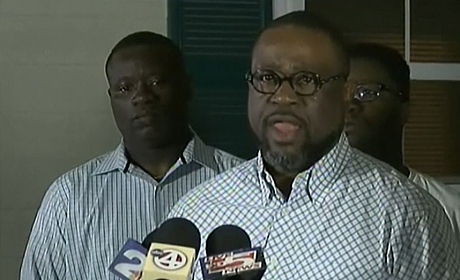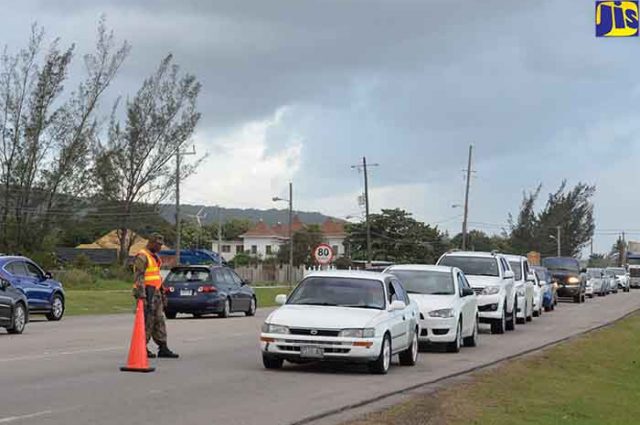Video of US police shooting may have major impact: ‘Now people see what we’re talking about’
By David Crary
THE ASSOCIATED PRESS
NEW YORK _ Graphic videos have surfaced previously that kindled outrage over police use of force _ the Rodney King beating in Los Angeles, last year’s chokehold death in New York City. The new video from South Carolina is perhaps the most striking yet _ its depiction of a fleeing, unarmed black man being shot in the back by a white policeman so vivid that a murder charge came swiftly.
Key questions remained about the 3-minute video, taken by a person whose identity has not been made public. Are there gaps in its portrayal of Saturday’s incident? How exactly did the video make its way to the media and then to local authorities?
Yet what was depicted on the video _ and subsequently viewed by untold millions worldwide _ may have a profound impact. The case intensified the ongoing national discussion about police treatment of African-Americans and the use of body cameras by police officers.
“I have watched the video and I was sickened by what I saw,” Eddie Driggers, the North Charleston police chief, said on Wednesday. The officer who fired the eight shots, Patrolman Michael Thomas Slager, has been fired and charged with killing 50-year-old Walter Lamer Scott after a routine traffic stop.
The video, provided to the dead man’s family and lawyer by the person who shot the footage, shows Slager dropping his stun gun, pulling out his handgun and firing at Scott as he runs away. Scott falls after the eighth shot, fired after a brief pause.
Scott’s father, Walter Scott Sr., said the policeman “looked like he was trying to kill a deer running through the woods.”
“In the African-American community, we’ve known of episodes like this for decades, but until there’s graphic video like this, our stories have not been believed,” said Paul Butler, a former federal prosecutor who is now a professor of criminal law at Georgetown.
“Now people are seeing what we’re talking about … how police literally treat black people like non-human animals,” Butler said.
Shot over a chain link fence and through some trees, the video begins after Scott has left his car. Slager follows him, reaching at the man with an object that appears to be a Taser stun gun. As Scott pulls away, the object falls to the ground, and Slager pulls out his handgun as Scott runs away. There is no indication that Scott was ordered to halt or surrender.
The final shot sends Scott falling face-down. Slager walks toward him and orders Scott to put his hands behind his back, but the man doesn’t move. Slager pulls Scott’s arms back and cuffs his hands, walks back to where he fired the shots, picks up the object that fell to the ground and returns to Scott’s body, dropping the object near Scott’s feet as another officer enters the scene.
The swift and forceful response contrasted sharply with how events unfolded after the Rodney King beating and the chokehold death of Eric Garner in New York City last July.
King’s 1991 beating by club-wielding Los Angeles police officers was depicted in a videotape made by a man who witnessed the incident from his balcony. After four officers were acquitted in a state trial, the Justice Department filed federal civil rights charges and won convictions against two of them in 1993.
In the Garner case, a grand jury decided not to indict Police Officer Daniel Pantaleo, who was involved in the fatal confrontation with the 350-pound (160-kilogram) black man. A video shot by a bystander showed Pantaleo trying to arrest Garner on suspicion of selling untaxed cigarettes, then wrapping his arm around Garner’s neck and _ along with other officers _ pulling him to the ground.
Garner can be heard repeatedly saying, “I can’t breathe,” before he goes limp. A medical examiner later ruled that a chokehold, along with Garner’s poor health, resulted in his death.
In another explosive case last year _ the fatal shooting of 18-year-old Michael Brown by a white officer in Ferguson, Missouri _ there was no video of the fatal shots. As in the Garner case, a grand jury declined to indict the officer.
In New York City, which was shaken both by the Garner case and the recent killing of two police officers, Mayor Bill DeBlasio described the South Carolina video as “so disturbing and so painful.” He said it fueled his interest in expanding the use of police body cameras in New York.
“We’re seeing things in a different light now that we have so much more video,” he said.





